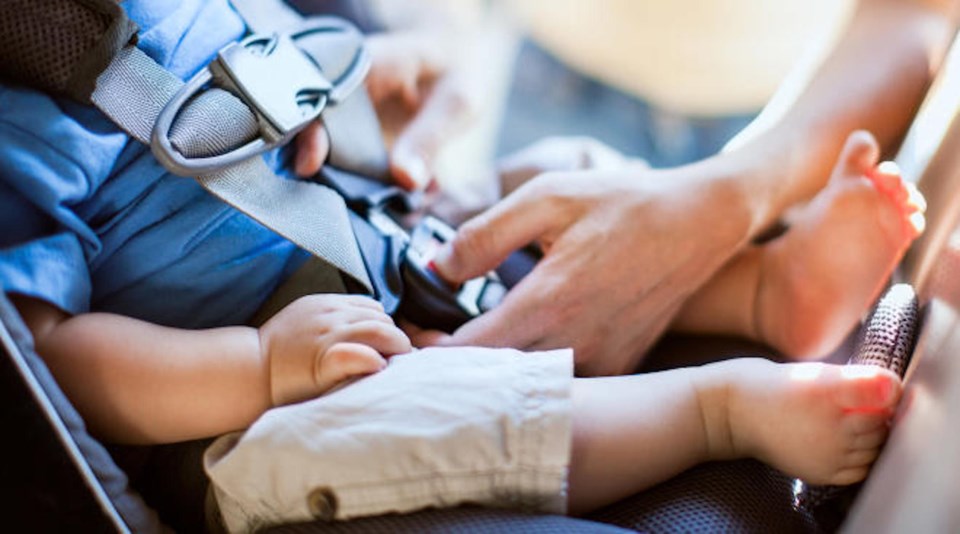WESTLOCK – Depending on the type of vehicle and seating position, seatbelts can reduce fatal and serious injury by 45 to 65 per cent.
That’s one of the facts RCMP across Alberta are touting in November as part of Occupant Restraint Month — in Alberta, the law requires everyone travelling in a motor vehicle to use a seatbelt or child safety seat that is properly worn and adjusted, while the fine for not using one is $162.
Westlock RCMP Traffic Services Sgt. Alexander Da Silva said they’re specifically focusing on child safety seats this month, as drivers are responsible to ensure all passengers under the age of 16 are properly secured — drivers may be fined for each unrestrained passenger under 16. Westlock RCMP Traffic Services patrol the highways of the Westlock, Barrhead and Slave Lake areas up to Wabasca/Desmarais.
In the past they’ve partnered with AHS to provide child seat safety clinics that allowed parents to ensure their seats are up to code and properly installed, but can’t this year.
“Alberta Health Services is so busy right now I doubt we’ll be able to do any of that. And then due to COVID, when we’re doing our regular traffic stops unless we really have to we’re trying not to intrude into a person’s vehicle,” said Da Silva.
Children younger than the age of six who weigh less than 18 kilograms (40 pounds) must be in a properly installed child safety seat. Youngsters are safest in a rear-facing car seat until they are at least two years old — once they are at least two they can move to a forward-facing car seat.
Once a child is at least six, or weighs at least 18 kilograms, they should be in a booster seat, say RCMP. While not required by law, booster seats are highly recommended because they help position kids so the seatbelt fits properly. Without a booster seat, a child is three-and-a-half times more likely to suffer a significant injury — RCMP say a child is safest in the back seat until they are at least 13.
“If you install a car seat you have to put your knee into it and cinch it up as tight as you can. And then if it doesn’t move more than an inch or two you’ve done a good job,” said Da Silva, recalling traffic stops where the child was on the floor of the backseat and the car seat was in the trunk. “And then of course it depends on the seat, what stage (age) it is and how it has to be installed.”
The release from the RCMP also notes that vehicles are designed with an engineered life space or passenger compartment that can withstand the force of most impacts and seatbelts keep occupants from being ejected through the windshield or thrown around the passenger compartment. Airbags, it goes on to note, are a supplemental protection and only function properly if the occupant is restrained in a proper position by a seatbelt. Airbags deploy at an explosive speed and can cause injury if the occupant is not properly positioned.
Impairment screening
Da Silva also wanted to remind motorists that if they’ve stopped for a traffic offence, or at a checkstop, a mandatory alcohol screening (MAS) test should be expected.
The release notes that RCMP Traffic Services are committed to using MAS in an equitable and non-discriminatory fashion for consideration in every interaction with drivers and are confident that the test can be completed with little or no further delay than was expected for the initial traffic stop.
“We’re trying to do 100 per cent — every vehicle that gets stopped has a mandatory alcohol screening and we do get a lot of people who are upset, especially first thing in the morning, or in an afternoon. For us, impairment is a 24-hour issue,” said Da Silva.
“Even though this has been in existence for almost two years I think there’s still a lot of people who are unaware.”
COVID-19 has made the screening a little more complicated, but Da Silva said they take all the necessary precautions for the health and safety of the public and officers.
“We’re wearing masks and gloves and every mouthpiece that’s used is new,” he added.


